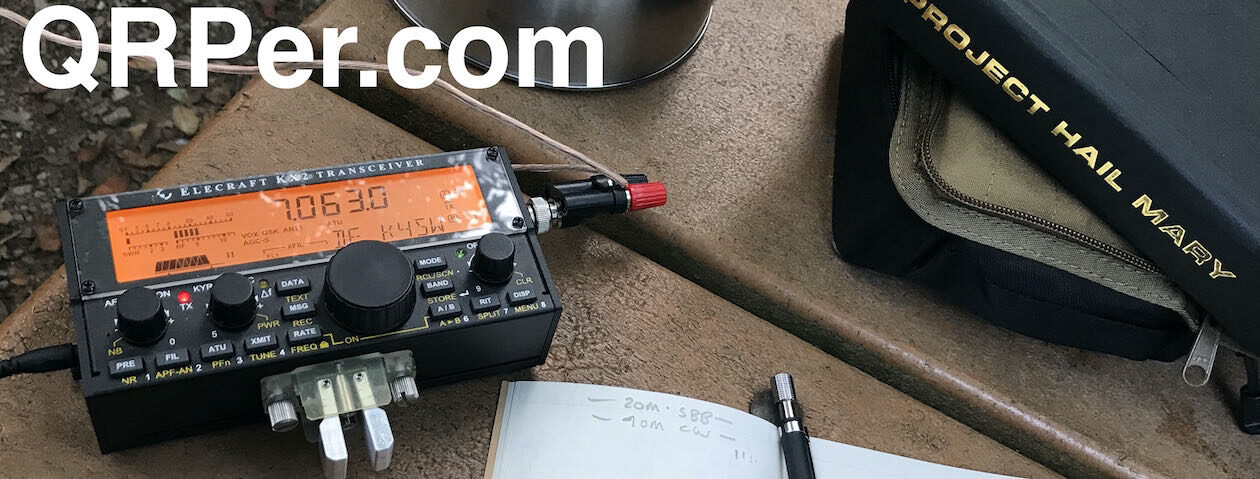A few weeks ago, I mentioned that Jonathan (KM4CFT) sent me one of his new QRP end-fed half-wave/random wire antenna kits.
When my friend, Alan (W2AEW), caught wind that I planned to buy some 26AWG wire for this build, he sent me a spool of wire from a large reel he’d recently picked up at a hamfest.
What a nice guy! The blue wire is absolutely ideal for portable antennas.
Being the nice guy he is, Alan actually published a video about building Jonathan’s antenna kit on his YouTube channel. I highly recommend watching it!
Before I received the kit, I already knew what type of antenna I’d build: a 30 meter end-fed half-wave (EFHW) linked with a 40 meter extension. This antenna design has been on my mind for some time and Jonathan’s kit was the perfect excuse to build one.
Why a 30M EFHW with a 40M extension? Because a 40M EFHW gives me excellent SWR matches on 40, 20, 15, and 10 meters without needing an ATU. A 30M EFHW gives me matches 30 and 17 meters.
Thus, with one linked wire antenna, I can cover 40, 30, 20, 17, 15, and 10 meters! That’s a lot of bands!
And since the antenna needs no extra matching, it’ll work with my transceivers that lack an internal ATU.

In fact, I originally thought about this antenna design to use with my Mountain Topper MTR-5B which covers 40, 30, 20, 17, and 15 meters.
I built this antenna by first trimming it for a 1:1 match on 30 meters including a loop and strain relief to attach the extension.
When I was satisfied with my 30M EFHW, I then made the 40M extension, attached it to the 30M section with 2mm bullet banana connectors, then trimmed the antenna for a 1:1 match on 40M.
I spent the better part of 60 minutes trimming this antenna. I feel like patience really pays off because it’ll set up the antenna for good matches on all of the upper harmonics. Admittedly, I was a bit pressed for time that day, so I only tested this antenna in one configuration (an inverted vee shape) so hadn’t checked the SWR as a sloper or vertical.
My advice is to aim for a 1.3:1 or better match on 30M and 40M–that should be very doable if you wound your transformer correctly.
This was my first attempt at making in-line links, so I wouldn’t consider link my method as a “best practice”–rather, check out K7ULM’s guidance for making in-line links. Continue reading SSB and CW QRP POTA: Testing my new KM4CFT End-Fed Antenna Kit!

















































